Simple Machines in Cars
The Encyclopedia Britannica defines a ‘simple machine’ as a device ‘with few or no moving parts used to modify motion and force in order to perform work.’ These devices were often well known in the ancient world, and are based on principles in physics such as moments. Simple machines have been used for projects including irrigation in the Stone Age, or even – it is alleged – in the construction of Stonehenge. The six simple machines are:
-
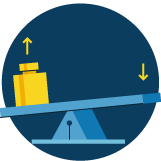
The Lever
-
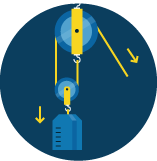
The Pulley
-
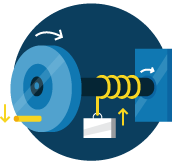
The Wheel and Axle
-
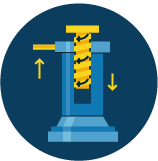
The Screw
-
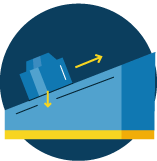
The Inclined Plane
-
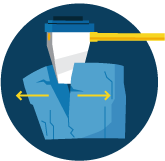
The Wedge
The lever, the pulley, the wheel and Axel, the screw, the inclined plane, and the wedge. However, the simplicity of simple machines should not suggest that they are rudimentary. In fact, simple machines are capable of extremely complex tasks. Modern automotive technology is highly reliant on the use of simple machines. No modern car is without them. Indeed, since simple machines tend to work on the basic concept of increasing force on an object through the use of angles and distance, it makes sense that cars – capable of huge forces – utilize their principles.
What are some simple machines?
Understanding how simple machines work is one of the most fundamental sets of principles in engineering. Generally, simple machines can be grouped into two classifications:

Increasing the force applied on an object without increasing the input of force
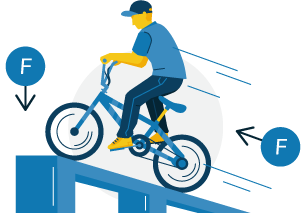
Allowing force to be applied in a different direction or on a different plane

These principles, while simple, have very complex implications. Most of these simple machines (in various forms) were known by the Greeks and Romans; some were known in prehistoric times and are therefore fundamental to the development of human civilization.
levers
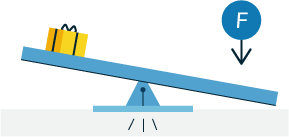
A lever is one of the simplest of the simple machines. Placing a bar, stick, plank or board on a support (a fulcrum) creates a lever. By adding a downward force to one end of the bar, the fulcrum acts as a pivot, allowing the other end to rise. This allows for a small input force to be increased, so as to lift heavier objects.
The equation to measure the force of a lever is:
Downward force multiplied by the distance of the force’s location to the fulcrum is equal to the distance from the fulcrum to the opposite end of the board multiplied by the upward force.
downward force x side 1’s distance to fulcrum = side 2’s distance to fulcrum x upward force
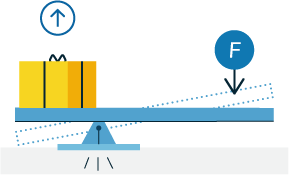
In practice, what this means is that placing the fulcrum nearer to the opposite end of the board than the downward pressure will cause large amounts of upward pressure. If, for example, the distance from the fulcrum to the downward force is ten times that of the fulcrum to the upward force, the upward force will be ten times greater.
pulleys
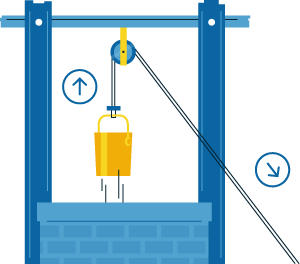
A pulley is a wheel with a piece of rope on its rim. Pulleys are extremely useful at maximizing force to pull (or lift) and object. By using pulleys in combination with one another, you can gain a mechanical advantage and lift objects far heavier than it would be possible to do without a pulley.
The use of a pulley also allows for a pull to be placed on an object in almost any direction, while force is exerted in another. This gives a great deal of flexibility in usage.

More advanced pulleys are possible using modern technology, although all are based on the same physical principles as simple pulleys.
wheels and axels
The wheel is often regarded as the exemplar simple machine. A wheel is a circular shaped object, often a very shallow cylinder pivoted around an axel, which allows for the wheel to rotate.
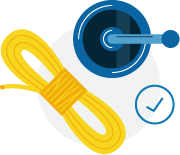
Because of the shape formed by a wheel’s rotation, they can be used in conjunction with ropes to make pulleys, or be used as a system of movement. A wheel is the same height and shape regardless of its orientation, which means that it has great utility in motion.
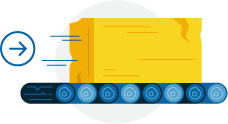
One theory for the building of Stonehenge and the pyramids is that the large blocks were rolled on logs, effectively utilizing a very simple form of wheel. Using multiple wheels in conjunction creates a system of gears, which allows for a small input to have a large output of force.
screws

A screw is a device that converts torque (turning motion) into thrust (forward motion). In effect, therefore, screws are devices that allow for forces exerted in one plane of motion to have outputs in another. The earliest application of the screw is believed to be in Ancient Greece or Egypt, where it was used to raise water to irrigate fields.
As with other forms of simple machines, screws have now become more advanced, and are used as fastening devices, holding together two different objects. This is based on the same principle – that torque (often in small amounts) can create large amounts of thrust.
Inclined Planes
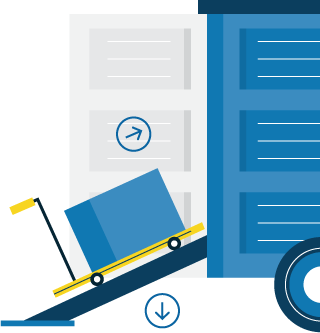
An inclined plane can be as simple as a ramp or board placed at an angle with one raised end and one lower end. Inclined planes work because the force required to move an object along an inclined plane is less than the force required to lift the object.

The steeper the slope, the more force required. The shallower the slope, the less force required, although the greater the distance required to move the object to reach the equivalent height.
Wedges
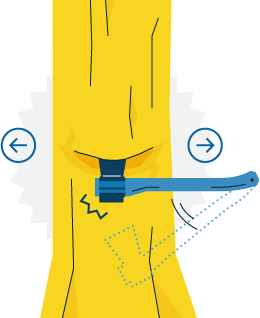
A wedge is an object with a narrow edge on one end and a wider edge on the other. The function of a wedge is to create a lateral force when force is applied in one direction.
For example, if an ax is struck horizontally into a tree, the wedge effect will mean that the force is applied vertically (both upwards and downwards). Axes are the simplest form of wedges. Other examples include the teeth on a saw.
Are there levers in cars?
The key benefit of a lever is that it allows for the magnification of force. There are multiple examples in a car; one notable one is the parking brake.
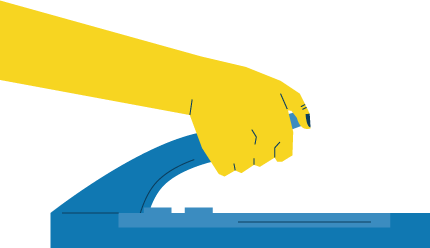
A parking brake has a fulcrum close to the actual break, creating a relatively long distance to the handle used by the driver.
When the driver pulls the parking brake, with relatively little application of force, he or she can exert a great deal of effort on the other end of the lever, thus ensuring that the brake is tightly clamped.

The doors of a car are also levers. A door is a type of secondary lever because the center of force is between the end of the lever and the fulcrum. As you open a door, the hinge acts as a pivot, and the door’s mass is in the center of the door.
Are there pulleys in cars?
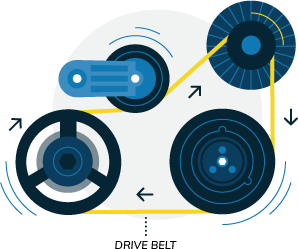
Pulleys allow for force to be applied efficiently in lifting a load. Pulleys are present in the car’s drive belt (essentially one single pulley). This is what turns the power generated by the engine into ways of powering ancillary functions of the car, such as the lights, the sound system, the climate control, and so on.

The benefit of using a pulley is that it is able to divide the load and ensure that the different components all get the required amount of force.
Do cars have wheels and axels?
The invention of the car is fundamentally predicated on the wheel and axel; it is one of the most intuitive simple machines within the car. Most cars have two axels and four wheels.
The wheels at the front of the car turn to provide the steering, but essentially the principle of a wheel is a means of allowing a car to move forward as efficiently as possible. Because car wheels are circular, the car remains at a constant height over the ground as it moves forward.
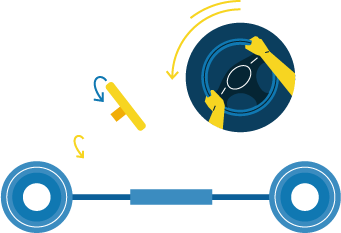
The driveshaft within a car is a wheel and axel system. As the internal combustion cylinders rise and fall, they turn the driveshaft because of their cambers. This allows for power to be efficiently generated, and the up and down motion of the individual cylinders to translate into the wheels turning.
The car’s steering system is also based around wheels and axels; as the driver turns the steering wheel, this turns the steering column (the axel) which in turn controls the direction that the wheels are facing.
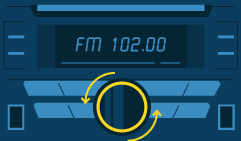
Indeed, there are several more examples of wheel and axel systems throughout cars, from the winding mechanism used to lower the windows, to the hinges on the doors, and even the knob used to adjust the volume on the radio.
Are there screws in cars?
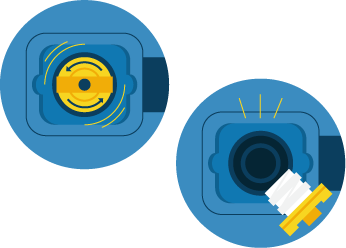
Screws are effectively a combination of an inclined plane (because of their tapered thread) and a wheel and axel because of the manner of rotating it to insert it in place. The mechanism of a screw is designed to translate rotational motion into forward motion. It holds in place because of the friction provided by the large surface area.
There are several screws used in the construction of cars; however, objects which are not screws but are based on the same principles include the car’s gas cap. When you remove this screw you rotate the cap and this pulls it away from the car.
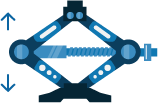
If you get a flat tire, you will jack up your car with a screw mechanism. As you turn the screw, the jack moves upwards, thus exerting force to lift the car off its wheels. This allows you to undo the nuts (also screws) that hold on the tire, so you can change it.
Are there really inclined planes in cars?
Whenever you drive on a ramp in your car you are making use of an inclined plane. This allows you to raise the height of your car with less effort than rising vertically. The forward motion of the car is translated into a change in height.
The front and rear windshield of your car are tilted to allow rainwater to run down them without pooling at the bottom (most of the external surfaces of a car are also not at right angles with one another).
This is also based on the principle of an inclined plane since it allows air and water to ‘flow’ past the car without providing an immediate stop. As the car moves forward, the air is effectively pushed away by the inclined planes on the car, thus allowing it to be more aerodynamic.
There’s no way there are wedges in cars, right?
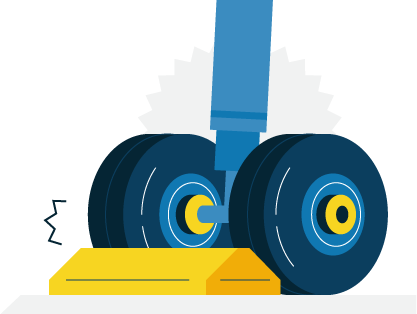
Actually. there are wedges in cars. Wedges function like two inclined planes back-to-back. Because of this, they can create a great deal of friction. In a wedge, the forces on the larger end are transferred to the smaller end, thus causing leverage, and allowing for the wedge to achieve such high levels of friction.
One use of a wedge in a car is to prevent the tires from moving when the car is at rest (like chocks on an airplane). The car’s forward or backward motion is arrested by the use of wedges.

In the engine of a car is a poppet valve, which is a valve that controls the flow of gas into the engine. A poppet valve functions as a wedge, preventing excess gas from entering the cylinder, and allowing it to be exhausted after combustion. Similar valves (Presta and Shrader valves) are also used on the pneumatic tires in cars, based on the same wedge principle.
Simple machines may be ‘simple,’ but they are capable of very complex tasks. Ultimately, the one thing that they all have in common is the application of force. Simple machines make it possible to change the direction of force and to magnify the force you can apply.
As a result, their use in cars is extremely common. It is remarkable to think that machines used by the Ancient Greeks and in some cases by prehistoric people are still being used to power the motor car in the twenty-first century. However, simple machines will continue to be key components of cars in the future, even as society moves to autonomous cars and other technological innovations.
Sources and Further Reading
- https://www.yourmechanic.com/article/the-mechanics-of-cars-simple-machines-in-automobiles-by-maddy-martin
